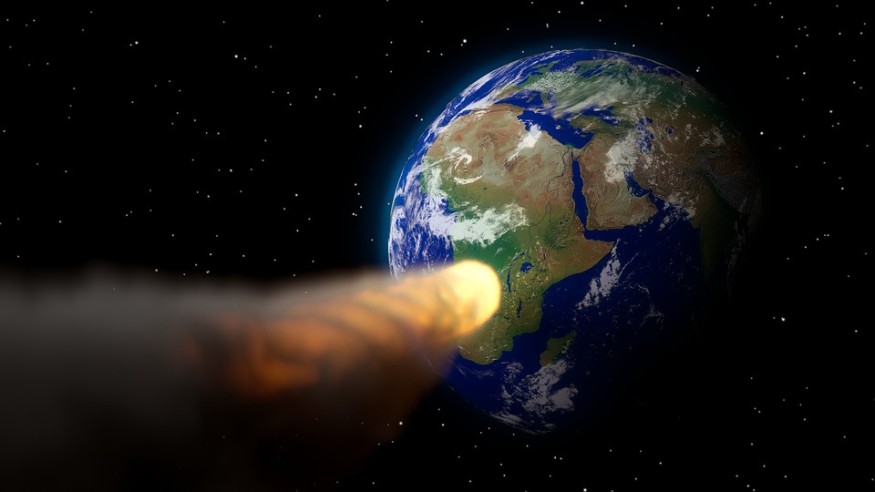Surprise! Asteroid the size of two football fields hurled straight towards Earth. On July 26, astronomers in shock made the shocking discovery of the sneaky celestial body.

Sneaky Celestial Body
In the early hours of Thursday, an asteroid larger than two football fields will fly by Earth (Aug. 4). The asteroid will pass around 12:23 in the morning. (ET).
NASA scientists very recently found the asteroid 2022 OE2 on July 26. Between 557 and 1,246 feet (170 and 380 meters) broad, or nearly twice as large as an American football field, is how huge the meaty space rock is thought to be. As reported by Live Science, astronomers have also determined that 2022 OE2 is an asteroid of the Apollo class, which implies it circles the sun and passes through the route of Earth's orbit. (About 15,000 such asteroids are known to astronomers.)
Potential Risk
This massive asteroid might crash and produce energy equivalent to 1,000 nuclear bombs. However, the Jet Propulsion Laboratory of NASA predicts that this one will miss Earth by a wide margin.
More than 13 times the typical distance between Earth and the moon, or 3.2 million miles (5.1 million kilometers), is how close the asteroid 2022 OE2 is expected to approach Earth. For comparison, the asteroid 2022 NF passed by Earth on July 7 at a distance of about 56,000 miles (90,000 km) or roughly 23 percent of the average distance between Earth and the moon.
Like this, tens of thousands of other near-Earth objects are seen by NASA, and their future courses have all been predicted. According to NASA, the good news is that Earth won't be at risk of a catastrophic asteroid collision for at least the next 100 years.
However, astronomers are aware that a little shift in trajectory, which might be brought on by a minor asteroid collision or a planet's gravitational pull, may modify a massive asteroid's orbit and put it on a potentially disastrous track for Earth.
Planetary Defense
Space agencies are quite serious about planetary defense to prepare for these events. NASA launched the Double Asteroid Redirection Test, an asteroid-deflecting mission, in November 2021. In fall 2022, a spacecraft will collide with the 525-foot-wide (160 m) asteroid Dimorphos. The impact won't destroy the asteroid, although Live Science previously claimed that the space rock's orbital route might be somewhat altered. The mission will assist in evaluating the effectiveness of asteroid deflection should a space rock represent an immediate threat to our planet in the future.
These concepts might sound far-fetched, but in November 2021, NASA launched the Double Asteroid Redirection Test, or DART, the first full-scale planetary defense mission, as a proof of concept. There is no immediate danger to Earth from the huge asteroid Didymos or its tiny moon. Purchasing homeowner's insurance is analogous to investing in planetary defense. Despite the extremely low possibility of encountering a catastrophe that destroys your home, individuals nevertheless get insurance.
For more Space news, don't forget to follow Nature World News!
© 2025 NatureWorldNews.com All rights reserved. Do not reproduce without permission.





